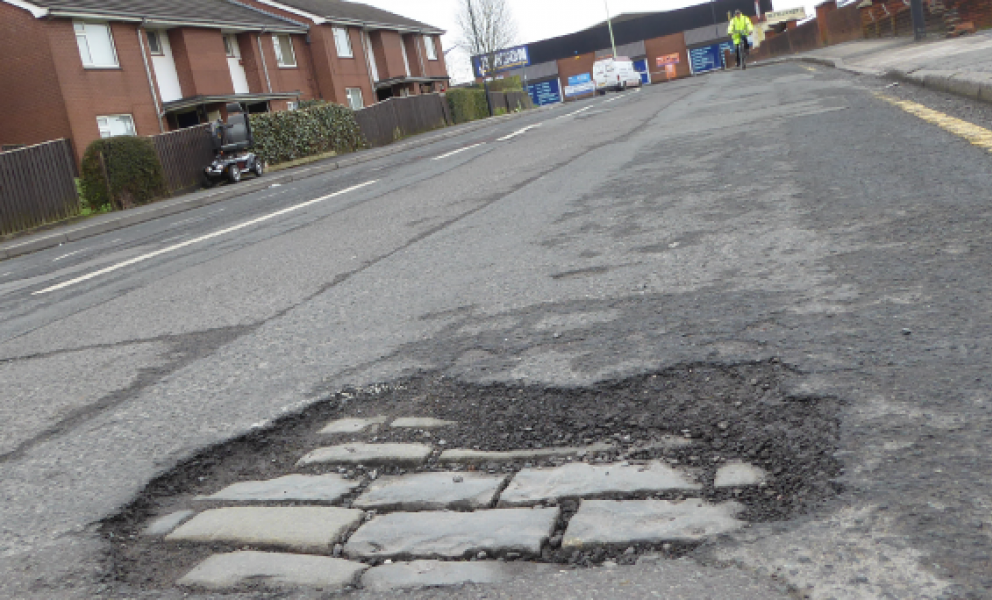
A new campaign aims to encourage people to join the fight against potholes by using a quick and easy system to report them on Lancashire County Council's website.
It also aims to minimise delays by asking people to provide accurate information and only report potholes that are big enough to be repaired.
The council's highways teams fixed around 40,000 potholes last year, and careful investment in maintenance over a number of years means that the overall condition of the county's roads is improving, with fewer potholes being found.
Lancashire's pothole-fixing teams work hard all year round, with each team able to repair up to 20 holes a day, but could do an even better job if more people used the Report It tool to provide accurate information when they find a pothole.
County Councillor Keith Iddon, cabinet member for highways and transport, said: "Potholes are caused by cold and wet weather and wear and tear from vehicles, which means we'll always have to deal with them, no matter how much we spend on maintaining the roads.
"We dedicate significant resources to fixing potholes, and our repair teams, who spend all day repairing them, do a really good job in all weathers to keep our roads safe.
"Our new campaign asks people to help our highways teams by taking the time to provide accurate information when they report potholes, and preferably to use the Report It function on our website.
"This is a quick and easy process where people can pinpoint the pothole on a map, and provide an approximation of its size, as well as attach photographs.
"This information allows us to quickly assess the risk it presents and decide how to prioritise it.
"Without accurate information it can be difficult to identify the issue being reported which is time-consuming for our highways teams, and potentially frustrating for whoever has made the report."
Lancashire County Council is planning to spend over £24.7m on road maintenance during the current financial year, including £4m on reactive repairs to potholes. The majority of the budget is spent on maintenance such as resurfacing, and 'surface dressing' using tar and chippings to waterproof road surfaces and prevent potholes appearing in the first place.
The council's consistent approach to road maintenance over recent years, focused on using survey data to inform timely preventative repairs, has resulted in a decrease in over a third in the number of potholes being found. 38% fewer were found by highways inspectors or reported by the public in 2018/19 (39,137) compared with two years earlier in 2016/17 (62,564). The council is responsible for 4,600 miles of roads and 5,300 miles of pavement.
County Councillor Iddon added: "Something we're also trying to communicate with our campaign is how big a pothole or other defect in a road or pavement needs to be before we'll repair it.
"We hope this will encourage more accurate reporting, as well as hopefully save some time for our highways teams, and reduce frustration for people reporting them.
"We have to set levels and limits on what we repair to ensure our limited resources are directed where they're most needed, with a focus on safety. This means we don't try to fix everything, and no council does this.
"The more people can help by using Report It to accurately report potholes the more efficient our highways teams can be in responding and keeping the roads safe and in good repair."
Potholes on roads need to be 40mm deep before the council will repair them, with potholes on pavements or road crossings only needing to be 25mm deep due to the increased risk of people tripping. It could then take up to 2 working days to assess the issue, and if a repair is needed up 20 working days to carry it out. However the council aims to fix issues on the busiest roads and pavements more quickly, with targets to repair them within 5 and 10 days depending on the location. If someone reports a pothole which could be a serious risk the council will aim to make it safe within two hours.
(Source Lancashire County Council news)







